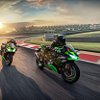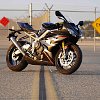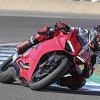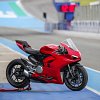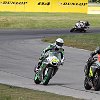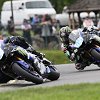After four and a half years, it looks like I’ll finally get to say, “I told you so.”
Way back in 2016, I predicted the end of the 600 cc Supersport class after Honda announced that CBR600RR sales didn’t justify updating the model in order to meet tightening EU emissions standards. I admit my prediction was premature. At the World Championship and national levels, Supersport remained a class for 600 cc inline fours, making allowances for 675 cc triples and 750 cc twins.
After years of minimal development across the class, Kawasaki introduced an updated 2019 ZX-6R (technically a 636 cc model.) Then Honda baffled me by announcing a 2021 CBR600RR — even though it may only be sold in the domestic Japanese market for a year or two before Japan, too, tightens its emissions standards to a Euro 5 equivalent.

But earlier today, Dorna — the organizers of the FIM Supersport World Championship — issued a press release that rang the death knell of the 600 Supersport class. Was I prescient, or am I more like a broken clock that’s right twice a day?
Dorna admits that, “The production derived intermediate class is long established, but as the motorcycle market evolves it is clear that changes are required to allow more motorcycle models to become eligible.” Translation: No one’s buying 600s any more, so it’s time to stop promoting them.

Beginning next season, Dorna will work with the British Supersport Championship to test a new Supersport displacement formula. Provisional entries will be allowed for a Triumph 765 cc triple and a Ducati 959 cc twin, “to evaluate if this new technical regulations [sic] could be the platform for the 2022 FIM Supersport World Championship.” The implication is that come 2022 we can expect 765 cc triples and 959 cc twins to be Supersport-legal.

The definition of “middleweight” has changed
Moving beyond the venerable 600 cc fours makes sense. The marketplace is always a dance between product planners and customers. It can be hard to tell who’s leading and who’s following, but it has resulted in “middleweight” sport bikes with fewer cylinders and ever-larger displacements.
The larger twins and triples are easier to ride and a little more user friendly. These cool new bikes came out after development largely stopped on 600s after the Great Recession, which served to make the newer ones look even better by comparison. It’s also easier to combine performance and emissions compliance in larger packages, which is not particularly important to customers, but it is to OEMS.
From Dorna’s perspective, it makes sense to promote a production-based championship promoting models that people are actually buying. The release is short on details about how parity would be ensured during the presumed period in which existing 600 cc fours and 675 cc triples would be grandfathered, but Dorna mentioned the balancing solution used in the Supersport 300 World Championship as a possible model. In that series, the organizers identified a “middle performing” model (the KTM RC390) and then defined rules to restrict better performing bikes, while allowing teams racing inherently slower machines to exercise more tuning freedom.
If they do something similar in an uprated Supersport class, it will be possible to stay competitive on a 600, but it will get expensive. And if manufacturers aren’t selling enough (or any?) 600s, they won’t spend the money required to develop more expansive race kits, or support teams.

Many national series, including MotoAmerica, base their Supersport rules on those used in the World Championship (though often with restrictions aimed at reducing costs for competitors). Earlier this year, Chuck Aksland told me that MotoAmerica’s homologation list of eligible motorcycles is copied from Dorna, so I presume that in a year or two we’ll see larger triples and twins racing here.
SayonaR6a?
One thing’s for sure: Customers aren’t buying new 600s in sufficient numbers to justify keeping them in production. So if WorldSSP stops providing a global marketing platform promoting the category, manufacturers will have no incentive to keep making them.
The news that World SSP is moving on to larger displacement twins and triples lends credence to the rumor that Yamaha is about to cut the YZF-R6.
The R6 is the apotheosis of the category and it’s still a strong race bike, but in the past few weeks, we have heard rumors from different sources on separate continents that it will be discontinued. My source told me that he expected Yamaha to sell a “race version” only for 2021.

I’m sure every motorcycle journalist has a favorite R6 story. Mine involved what must’ve been a 2005 or ’06 model back in the days when I was living in San Diego and working for Motorcyclist. I had a test route that I used for all sport bikes so I could, as much as possible, compare oranges to oranges. The route took me up the very technical Mount Palomar South Grade and then down the faster, bumpier (and more dangerous) East Grade.
I rode almost every sport bike on the market over Palomar, but the R6 was a revelation; one of those great motorcycles that actually makes you a better rider. I haven’t lucked into too many R6 tests since then, but other journalists assure me the recent models still have that effect.

I have no additional info on a possible, final “race version” for 2021, but I’ve long thought some OEM should build a track-only 600. No lights; lightweight fiberglass bodywork instead of expensive-to-replace plastic; a full-race exhaust; frame sliders, bobbins on the swingarm, maybe pre-drill critical fasteners... I doubt that Yamaha will go nearly that far, but whatever form the final R6 takes, I bet it will prove to be a great investment if you want to throw a blanket over it, or an incredible track day bike if you’d prefer to throw a leg over it.
The market’s moved on, and Dorna’s moving on. It’s time. But it will be a hell of a long time before anyone who was a racer in the “Oughts” forgets the brilliant arms race that was the 600 cc Supersport class.





